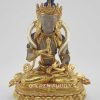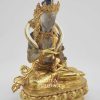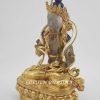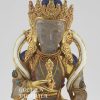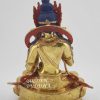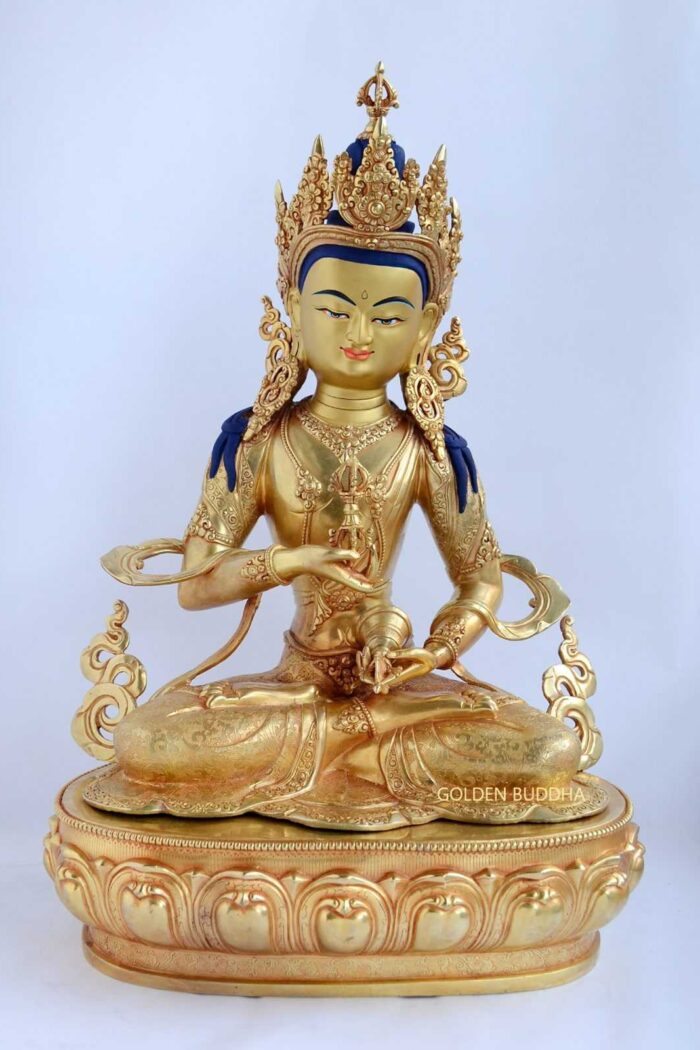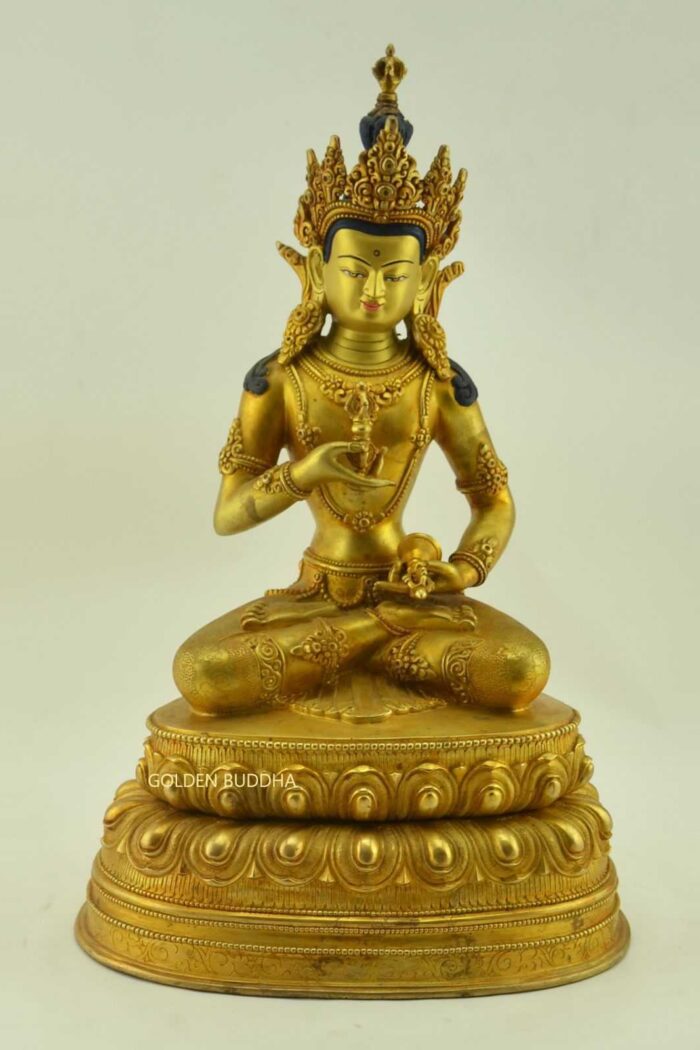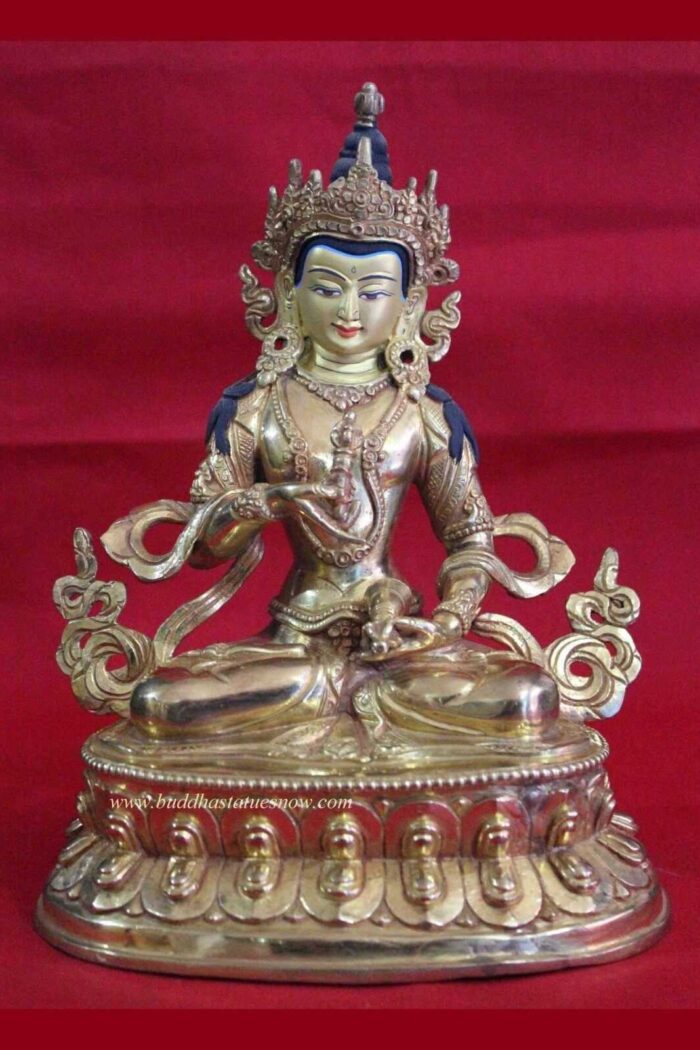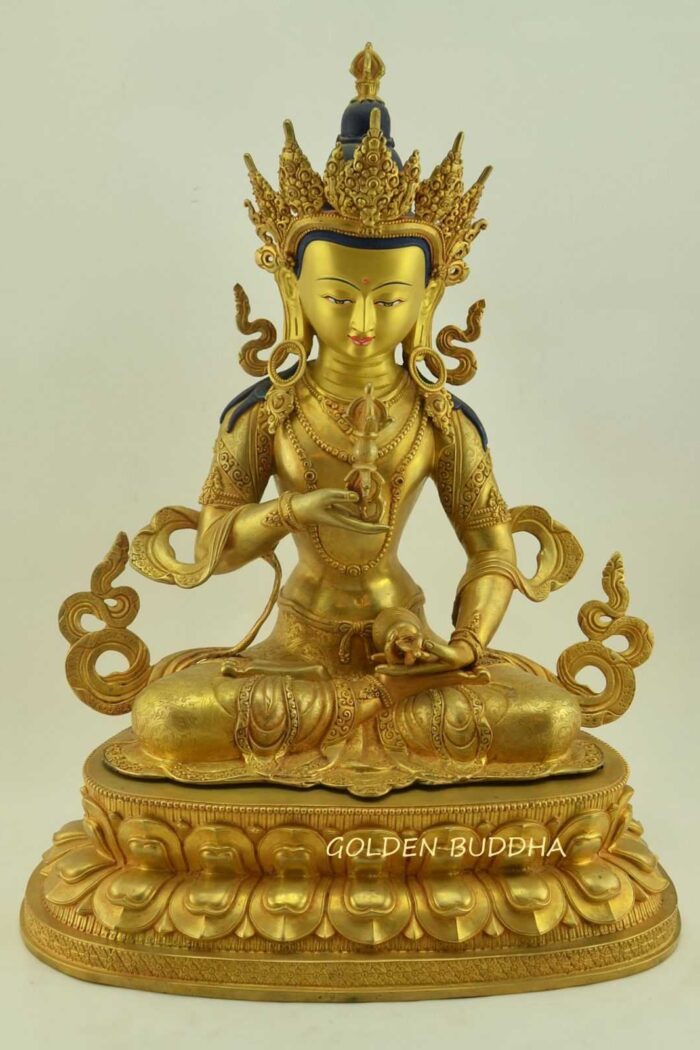Our beautiful Nepali Vajrasattva sculpture was hand carved using the traditional lost wax sculpting method. Additionally, the sculpture features a hand carved crystal body and embedded semi-precious stones. It is indeed a unique statue that features traditional Nepali sculpting techniques. As a result, the buyer can rest assured they have procured a monastic quality sculpture.
Furthermore, the artisan included the crown and earrings of a Bodhisattva. The crown and earrings can be embedded with turquoise and red coral stones at the request of the buyer. The color turquoise is a special combination of blue and green. Indeed, blue signifies the purity of the Buddhas and green symbolizes their readiness to act. The special adornments will embellish the sculpture and inspire all those who lay their eyes on it.
Nepali Vajrasattva Sculpture Meaning
The ghanta bell in his left hand is the ancient feminine symbol for wisdom and the vajra in his right hand is the masculine symbol for compassion. As a result, our beautiful sculpture symbolizes enlightenment. This is because it is the joining of these two virtues that create Nirvana.
Our Nepali Vajrasattva sculpture represents the sambhogakaya embodiment of the Primordial Buddha – Vajradhara. This embodiment is one or the “3 kayas” (bodies) of the Buddha. Additionally, the sambhogakaya is described as a “subtle body of limitless form”. This means that a Buddha or high level Bodhisattva can use the sambhogakaya to appear in any form necessary to relieve the suffering of sentient life. Click here to learn more about Vajrasattva.



